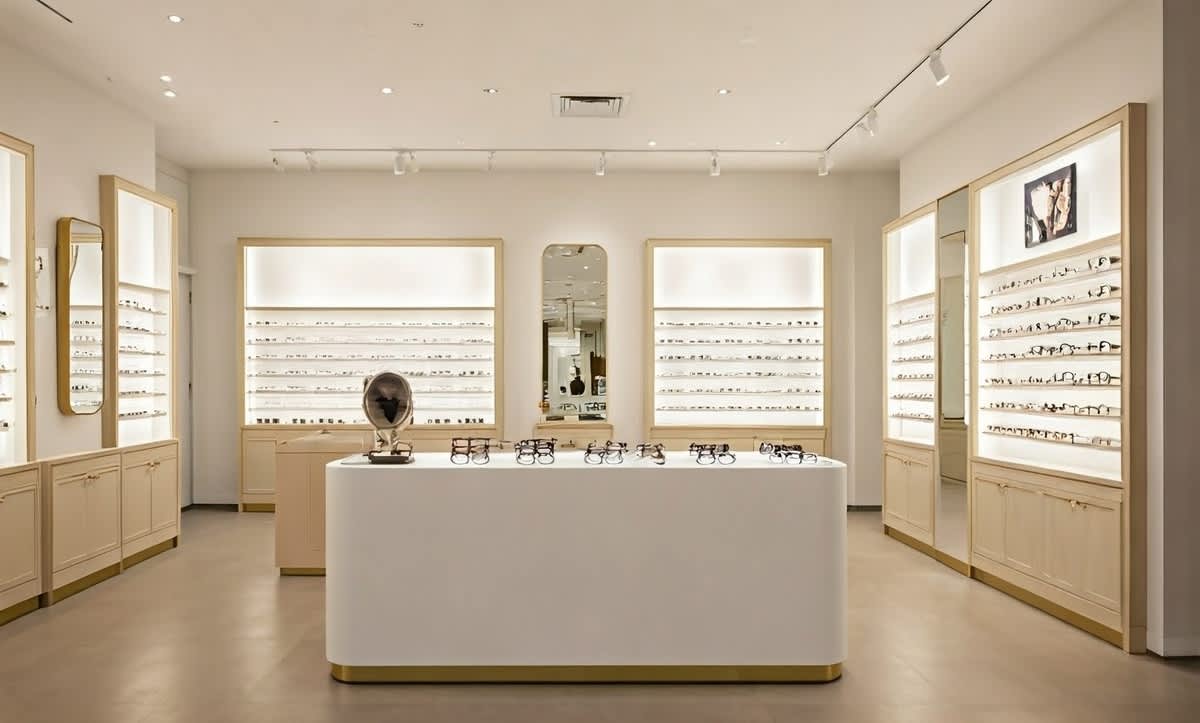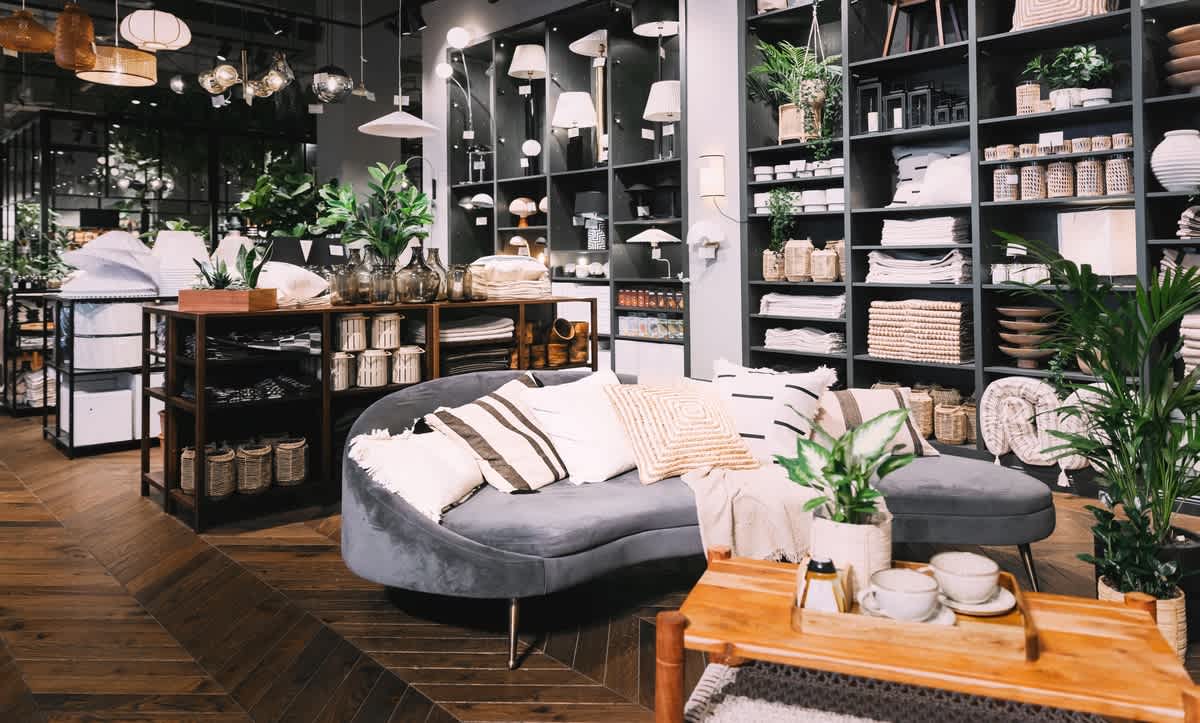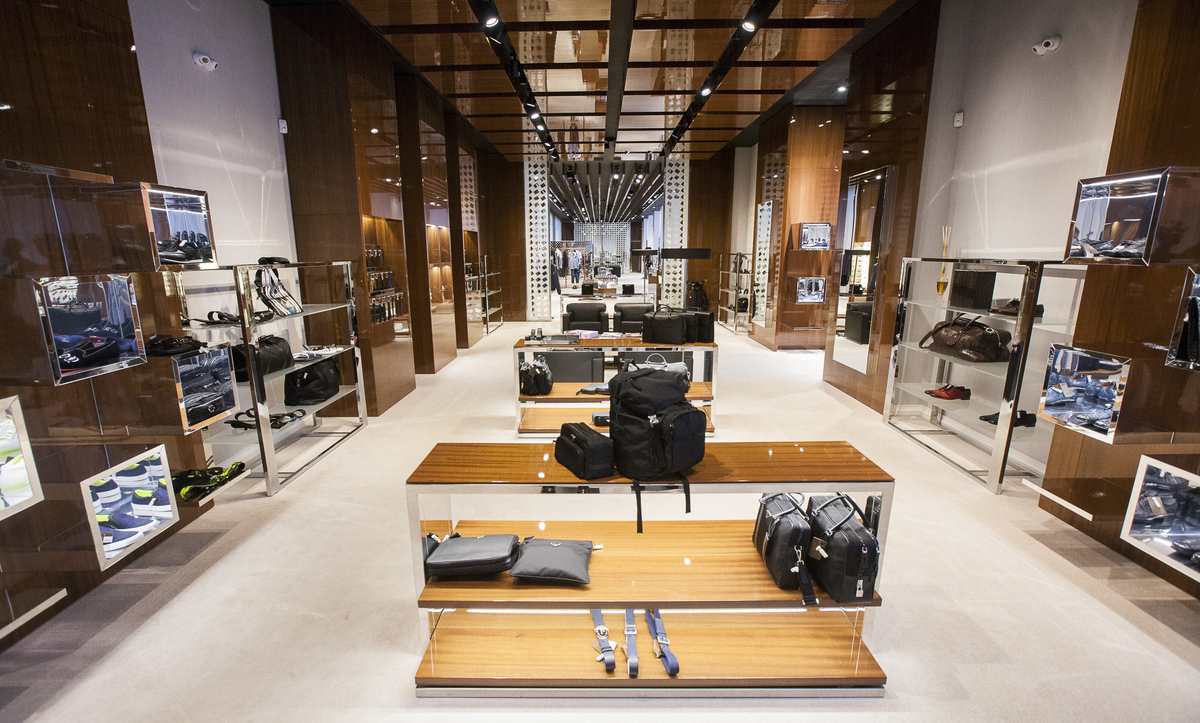Home Page | Blog | The Best Interior Design Strategies for Retail Stores
The Best Interior Design Strategies for Retail Stores
4/4/2025

A well-designed retail store attracts customers and keeps them engaged. Thoughtful layouts, appealing aesthetics, and strategic displays create an inviting atmosphere. Every design element plays a role in shaping the shopping experience.
1- The Micro-Movements That Shape Shopping Patterns
Subtle body movements determine how shoppers engage with a space. A slight head tilt signals curiosity, often triggered by asymmetrical displays. Slow foot shuffling suggests indecision, indicating areas where additional information is needed. An unintentional pause before a product could mean the lighting or contrast subtly caught attention. Understanding these micro-movements allows for adjustments that enhance engagement.
2- How the First Five Seconds Dictate the Entire Experience
The brain processes a new environment almost instantly. The first five seconds inside a store set expectations. A slight temperature shift from the outside world signals comfort. A contrast between the entrance and interior lighting directs the gaze. The first visible display primes shoppers for their browsing speed—dynamic arrangements increase curiosity, while linear setups encourage a structured approach.
3- The Science Behind ‘Invisible’ Sales Paths
Shoppers don’t just wander—they are guided without realizing it. Low-contrast flooring encourages continuous movement, while changes in texture make people slow down. Narrow aisle endings subconsciously tell the brain to stop and evaluate. Height variations in display tables create a sense of depth, drawing customers toward specific sections without needing directional signs.
4- How Smell Alters Decision-Making
Scent affects perception before words or visuals. A faint vanilla aroma near luxury sections slows customers down, increasing perceived value. Citrus notes near checkout counters subconsciously speed up final decisions. Leather or woody scents make high-ticket items feel more premium. The right fragrance can increase dwell time without the customer even realizing why.
5- The Role of Peripheral Vision in Product Discovery
Shoppers don’t just look at what’s directly in front of them. Peripheral vision captures contrasts and movements before conscious attention shifts. Slight color shifts between displays draw the eye naturally. A sudden angle change in shelving creates a visual break, signaling an area worth exploring. Dynamic reflections from metallic elements catch attention in a way static objects don’t.
6- The Psychological ‘Pause Points’ That Encourage Spending
Every store has unintentional rest zones where customers stop without thinking. The right adjustments can make these moments work in favor of the design. Mirrors at intersections reset visual focus, extending browsing time. Wider gaps between racks in high-margin sections make decision-making feel less pressured. Angled seating areas invite customers to linger near impulse-buy products.
7- Why the Best Displays Don’t ‘Look’ Designed
Too much structure makes a display feel staged, reducing authenticity. Slight misalignment in stacks mimics natural human behavior, making a product feel more approachable. Overlapping price tags create a layered effect, suggesting demand. A combination of matte and glossy surfaces increases visual variation, encouraging interaction.
8- Why Sound Frequency Impacts Time Perception
Background music affects how long customers stay. High-frequency sounds make time feel faster, ideal for fast-moving retail environments. Low-frequency, rhythmic beats stretch perception, making people feel like they’ve spent less time browsing than they actually have. A sudden pause in music near checkout zones resets mental pacing, reducing rush-induced purchase regret.
9- How Packaging and Store Design Must Speak the Same Language
Mismatched branding between product packaging and store interiors disrupts the buying process. Soft pastel environments make bold, graphic packaging seem too aggressive. Dark-toned interiors elevate minimalist packaging but dull bright-colored products. The balance between store design and item presentation affects how products feel in context.
10- The Unexpected Influence of Ceiling Heights
High ceilings encourage exploration, making open-concept stores feel more dynamic. Lower ceilings create a sense of intimacy, best for high-end, personalized shopping. The angle of light hitting the ceiling changes perception—indirect lighting softens the atmosphere, while spotlit ceilings create energetic movement. Varying ceiling heights in different sections subtly shift customer behavior.
11- The ‘Rhythm’ of a Store That Keeps People Moving
Retail design isn’t static—it moves like a rhythm. A mix of horizontal and vertical product placements creates a natural pacing. Repeating visual elements at intervals generates subconscious continuity. Contrasting wide-open areas with compact sections resets attention spans, preventing mental fatigue. A sense of flow determines how long customers engage with the space.
12- Tactile Experiences That Trigger Emotional Connection
Touch influences buying behavior more than sight alone. A soft fabric sample near clothing sections encourages physical interaction. Slightly textured price tags make products feel more premium. Cool-to-the-touch metal elements suggest durability. The sensory experience of texture strengthens product attachment before a purchase is made.
Final Thoughts
Retail design is an unspoken conversation between space and shopper. Every unnoticed detail influences behavior in ways most don’t realize. The smallest shifts in lighting, layout, and sensory elements create experiences that customers don’t just remember, but feel.
Want to transform your store into an experience customers never forget? Start with the unseen details that make all the difference!
FREE
CONSUL
TATION
FREE CONSULTATION
TELL US ABOUT YOUR PROJECT
WE WOULD LOVE TO HEAR FROM YOU
Feel free to reach us via this contact form and one of our Design Consultants will get back to you at earliest.
OUR BRANCHES
UAE - DUBAI
+971 52 8111106 | hello@algedra.ae
TURKEY - ISTANBUL
+90 533 701 89 71 | info@algedra.com.tr
Leading Interior Design and Decor Company in Dubai and Abu Dhabi.
Algedra is a reputable, internationally recognized, and one of the most successful interior design companies in Dubai, and Abu Dhabi, which specializes in delivering interior design, architectural, and creative space planning projects throughout GCC, MENA, North Africa, Turkey and Russia.
Algedra is a one-stop solution for all your residential interior design and fit-out needs. We have successfully completed numerous villa interior and exterior design projects, where we integrated quality and originality to deliver interior masterpieces.
ALGEDRA, Interior Design Company in Dubai, is specialized in providing elegant and stunning interior design services for both residential and commercial projects. We turn our clients' dreams into reality, trans- lating their tastes and needs into beautiful and functional spaces.
Since the day we were founded, we have designed and built many branded residences, resorts, hotels, multi-purpose social spaces, and palace designs with different functions and concepts by following the ever-changing design trends over the world.
A key element of our work is a fusion of different cultures and designs, combining Greek, Italian, Eastern and Western influences with British innovation.
As a team of highly qualified interior designers and engineers, Algedra offers complete architectural services from mall design to corporate office design as well as the exterior design of any project based on customers' needs.
Our customers include leading names, we have completed diverse projects in hospitality, landscape, commercial, and residential designs. These projects contain cafes, restaurants, gym, villas, family sitting rooms, bedrooms, kitchens; all showcasing our company's exquisite details and high-end designs.
Residential Interior Design in Dubai
Algedra's interior designers and architects have an important mission: building villas, houses, apartments, condos, and anywhere else where you reside that will fulfill your needs while being structurally safe and sound.
Architectural Designs
There are so many details that go into designing an architectural design project. Every step of the project has been carefully considered for safety and daily comfort by Algedra's experts.
Commercial Design
Conceptualizing spaces for business, to elevate style, and to increase functionality to help enhance the bottom line of a company is vital, as well as employee comfort and interior design too. Our commercial interior designers translate client's concept in ways that are efficient, attractive and provide professional workspaces.
Fit-out Projects
Algedra Interiors delivering high-quality tailored fit-out projects that transform your villas, palaces and commercial spaces.
We're a passionate team of interior designers, architects and engineers. Every day we help clients to solve interior design problems and create engaging spaces!
Wherever you are in Kuwait, Saudi Arabia, Azerbaijan, Qatar, Morocco, Algeria, Tunisia, Libya, Egypt; don't hesitate, contact us to find out more about why we are one of the best interior design companies in Dubai and Abu Dhabi!




